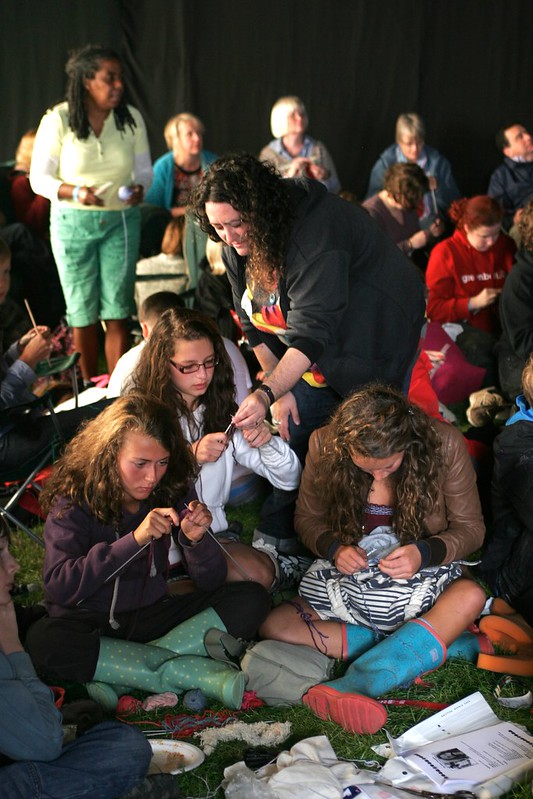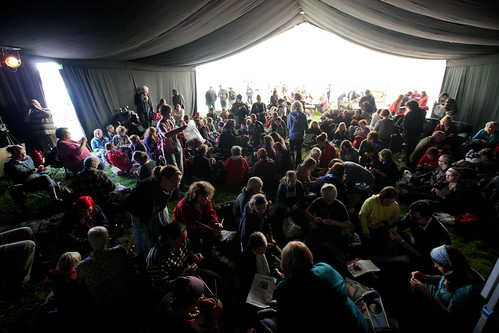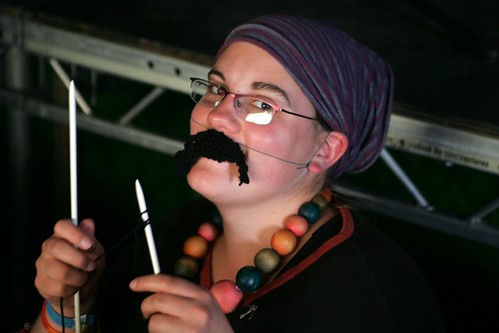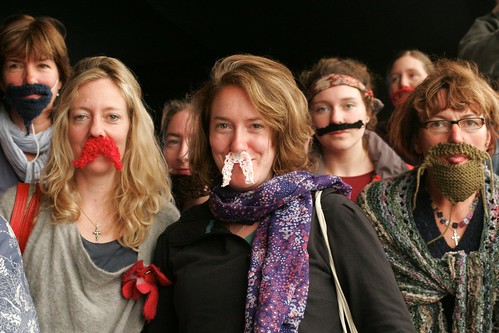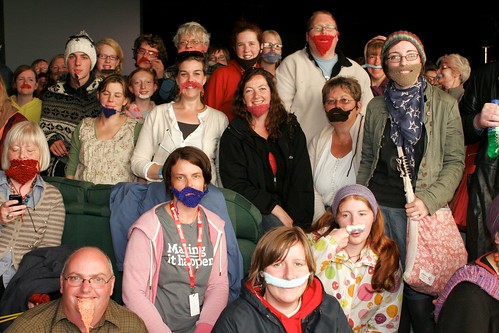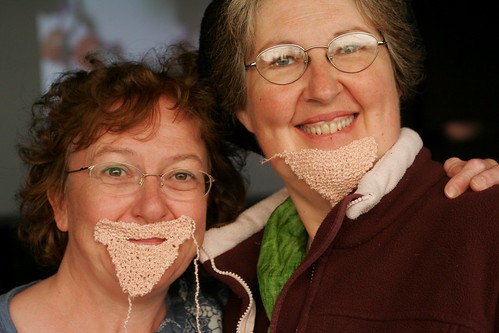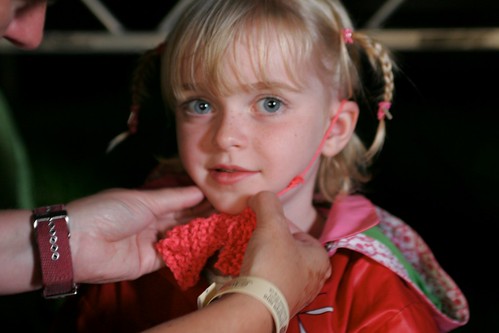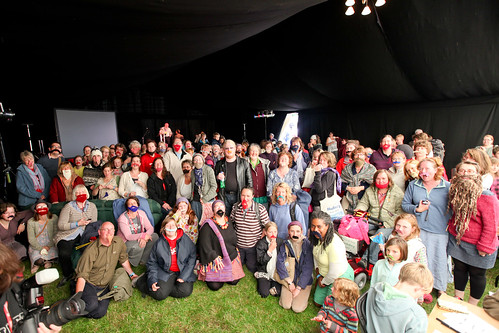A couple of years ago I interviewed a group of knitters about the weirdest thing they had ever knitted. This 2 minute film was the result. (It was chosen to be shown as part of the short film programme for LadyFest London.)
First appeared in Third Way Magazine, April 2013.
There are 62 Lego bricks for every man, woman and child on the planet. The Lego factories produce 600 bricks per second, so even if there were an unexpected worldwide baby boom, there would still be plenty of six by twos, profile bricks and Minifigs to go round.
The u-brick-quitous (sorry) plastic blocks were developed over fifty years ago in the small town of Billund in rural Denmark, where local carpenter Ole Kirk Christensen started a toy company. He believed that as these products were for children they needed to be finished to the very highest standards. His company motto was Not even the best is good enough. His refusal to compromise on quality paid off and demand for the toys grew steadily. Christensen renamed his company Lego. The name comes from the Danish words Leg Godt, which mean play well. It was only later that someone pointed out that rather aptly Lego is also the Latin for I put together.
Lego began producing interlocking plastic building bricks in the 1950s. However the first hollow blocks were unstable. It took Christensen’s team, led by his son Gottfried over 10 years to develop a brick with a tubular interior, which grabs and interlocks with other bricks firmly (as anyone who has ever had to bite a pair of Lego bricks apart knows.). This design is still used today meaning bricks from the 1950s fit together with bricks fresh from the factory.
Lego grew in popularity initially throughout Scandinavian, into Europe and then the rest of the world. By 1968 Billund had it’s own airport paid for by Lego to enable them to ship their product around the world, whilst over 200,000 people a year were travelling to the backwater town to visit Legoland – a theme park created to cope with the crowds who wanted to visit the factory. The world was playing well with Lego.
Child development experts have described Lego as the toy of the century, lauding it for nurturing creativity, problem solving, numeracy and hand-to-eye coordination. Whilst parents love it for being value for money, suitable for both brothers and sisters, and for teaching kids to tidy up their toys – you only have step on a Lego brick in your socks once to learn this valuable lesson.
The Christensen family’s attention to detail has been both Lego’s success and it’s failing. For a long time it was not unusual for products to be in development for over 4 years at Lego, which wasn’t cost effective in the fast paced modern toy industry, resulting in the company posting losses of over $300 million in 2003.
However like Lazarus Lego has been brought back from the dead, posting net profits in 2012 of over $950 million. The company has been resurrected by shifting production to cheaper locations in Eastern Europe and getting back to what they do best – making plastic building bricks. Film and character tie-ins such as Harry Potter and Star Wars have increased the audience and appeal of Lego products, as has a new range targeted at girls, the much-vilified Lego Friends. This controversial range comes in pink packaging and seems to suggest that girls should only want to build cupcake bakeries and pet grooming parlours from pastel bricks. There has been worldwide disapproval of Lego Friends and an international petition asking Lego to rethink these products. 62 bricks per person worldwide means if Lego sanctions sexism and lazy gender stereotypes, it can have a world changing impact.
Ole Christensen said he wanted Lego to allow children to explore, experience and express themselves. Lego continues to do this, but it is no longer just for children. Product designers, architects, engineers and town planners, contemporary artists and animators all use Lego as an expressive and creative medium. Lego has quite rightly been described as the clay of the modern world.
First appeared in Third Way magazine, December 2012. Covering for regular columnist.
White. Mixed coloured. Landfill Mixed coloured with food waste (no card). White with food waste. Plastic, card and glass. Compost This is the list of the seven, that’s right seven, different recycling bins my friend has in her swanky new, eco office. As office manager it is her job to ensure her colleagues use this comprehensive system. Failure to recycle correctly is a breach of their tenancy, which results in a fine and for repeat offenders eviction. Since the move to their new office, she estimates that over 50% of her time has been taken up with sending emails reminding her colleagues to rip the cellophane out of their sandwich packet and brush the crumbs into the compost before putting it in the card recycling.
I had been jealous of her move to such a hip building, where there is a shared vegetable garden, yoga at lunchtime, and massages for cyclists every Monday morning (a reward for not dying on the way to work), but all this sounds a bit exhausting. Then after a couple of weeks, she realised several staff were just throwing everything in the landfill so they didn’t have to sort it. The net result of having such a comprehensive recycling system was that they were actually recycling less. As ever human free will was the one thing standing between complete efficiency and failure. By this point my friend however was so weary of sending reminder emails and being referred to as the recycling nazi, that she had taken to waiting until everyone had gone home and then re-sorting the bins herself.
I wholly sympathise with her reluctance to speak up and challenge her colleagues. For a while I worked for a rather bombastic and deliberately contrary boss. In a staff meeting he told me off for buying fair trade coffee, declaring that all fair trade brands tasted like muck, and that he wanted Nescafe. My small rebellion for the rest of the time I worked there was to refill the Nescafe jar with Café Direct. My boss didn’t ever notice.
Ghandi said be the change you want to see, but it seems my friend and I have been living by a variation of this maxim – Be the change that only you can see.
In every day life it can be tricky to work out when to speak out, when to remain silent and how to pick your battles. The tired, non-confrontational part of me might choose to rest easy in a cursory reading of Matthew chapter 6. My fair trade coffee by stealth is validated by verse 2 which recommends that our giving to the poor should be done in secret. My friend sneaking around recycling is supported by Matthew’s warning to be careful not to do good things in front of other people. However by cherry picking scripture and choosing this interpretation I am of course merely validating my behaviour, perpetuating the comfort of martyrdom and avoiding confrontation. It’s as if I haven’t been listening to the Junior Church bellowing out Be bold, be strong! week in week out.
My friend can’t carry on as a one woman recycling plant, and I have sent her an email encouraging her to be bold and talk to her line manager. I reminded her that she is not alone and that a wise frog once said it’s not easy being green.
If we believe God is with us, that the Holy Spirit is real, then we can trust that he will enable us to be bold when we need to, and to know when being quiet is justified. And perhaps we need to be bold in challenging even the seemingly small injustices, so we are ready and able to do the same when the really big waves hit.
A nine metre high, concrete wall surrounds Bethlehem. If Jesus was born today, he would grow up playing in streets overlooked by watchtowers like this one. Israeli soldiers with guns watching his every move.
Local people are no longer free to travel. Water is withheld. Home are demolished without warning for being in the wrong place. This madness isn’t going to result in peace for Israel and Palestine.
The way people living in Palestine are being treated makes a lot of people cross, if you’re a crafter it makes you cross-stitch.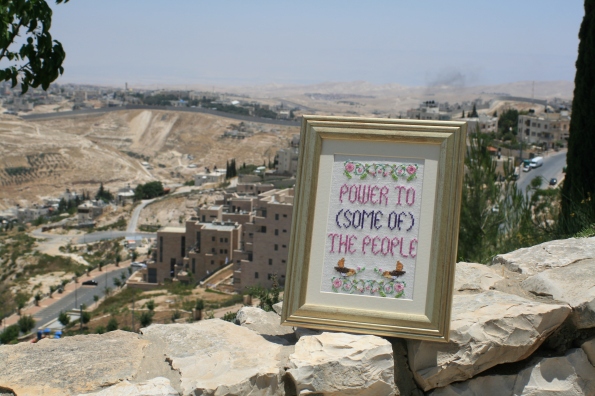
We Stitch Angry is a craftivist project I created as part of my work for the human rights organisation, Amos Trust. For over 20 years Amos has partnered Christian, Jewish and Muslim peace groups in Palestine and Israel. Amos endeavours to support their work, stand with them against injustice, and tell their stories, using art and creative campaigning.
I invited crafters to join me creating protest cross stitch samplers, supplying them with a slogan and a deadline. I then took the completed 15 cross-stitch pieces, created by 14 British women with me to the Holy Land. We then photographed the samplers in appropriate settings across Palestine and Israel e.g. Home Sweet Home outside a demolished home; Power to (some) of the people overlooking an illegal settlement housing estate, and so on.
The resulting exhibition was launched at the Greenbelt Festival in 2012. “This understated exhibition felt to me to have the perfect measure of tongue-in-cheek humour and political starkness, and left me smiling as well as thinking. ” Click here to read this review in full.
It was then part of the ADVENTurous exhibition at Leftbank Leeds.
 (Click here to see more lovely photos of the work in situe).
(Click here to see more lovely photos of the work in situe).
It has since been hosted in Kingston-on-Thames and Cheltenham, and continues to tour the UK.
First appeared in Third Way magazine, January 2013. Covering for regular columnist.
I found myself agreeing when a friend recently tweeted “Quite surprised BBC News 24 doesn’t have anything about the Zeuthen case.” Typical BBC, I thought indignantly, I know he’s Danish, but this is the kidnapping of the daughter of one of the world’s richest men. It then dawned on me that I was forgetting one vital fact, Robert Zeuthen is not only one of the world’s richest men, but he is also entirely fictional. Curse you brilliant Danish screenwriters! The Killing is so flipping compelling that some of us are so absorbed that we can’t stop thinking about it to the exclusion of real life.
When I was a teenage zealot, preachers at the youth rallies, beach missions and hymn-athons that I willingly attended were always going on about the dangers of television for young Christians. However whilst they spoke in no uncertain terms about how television was spiritually harmful and should be avoided, they didn’t once warn of the dangers of looking like a complete berk due to being unable to tell the difference between real life and excellent Nordic fiction.
Watching TV was pretty high on the list of don’ts for young Christians when I was growing up, along with not wearing strappy tops (‘Are teenage boys are driven wild by shoulders then?’ My friends and I wondered) and not buying things with ying-yang symbols on them. That throw my housemate bought for the sofa in our shared uni house was pretty much the equivalent of covering our knackered futon with Satan’s own vomit apparently.
I always felt frustrated that these preachers were advocating complete abstinence from television (and pretty much everything-else too. Cue a whole other kind of frustration, cough). This meant that either I was a terrible Christian because I loved watching telly or these preachers weren’t being very discerning about what programmes they were watching. In our house the television wasn’t showing the continuous depravity and sin that they seemed to suggest was the norm, round ours it was mostly Delia Smith boiling eggs, Anneka Rice jumping out of helicopters and Bill Cosby as Dr Huxtable wearing an array of excellent jumpers. My brother and I did try watching Mary Whitehouse’s favourite The Singing Detective, but it seems you have to sit through an awful lot of horrific skin disease and weird dream sequences to get to all the bums, so we gave up and went to bed. Apathy had kept us pure.
I was reminded of the well-meaning but prohibitive Biblical teaching of my youth whilst reading Rachel Held-Evans’ fascinating book The Year of Biblical Womanhood. The writer spent a year of her life trying to follow every teaching and direct instruction for women in the Bible. Whilst I’m not about to copy Held-Evan’s experiment I, like many of her readers have been inspired to re-engage with the Bible. I mean it is one thing to think the preaching I heard twenty years ago was too extreme, but another to be so liberal in my old age that I no longer actually read the Bible regularly.
The verses that were always bandied about instructing Christians not to watch TV are Philippians 4 where Paul advises believers to only fill their heads with whatever is true, whatever is honourable, just, pure and lovely. Revisiting these verses I take them to mean you shouldn’t watch bad television. Don’t watch stuff that is badly written, makes you feel bad about yourself or bad towards other people. And twenty years on Iplayer, Netflix and DVD box sets mean there are definitely no excuses for watching mindless crap. So now all I have got to do is get a grip on fact and fiction and keep in check the covetousness and lust I harbour towards Sara Lund’s jumpers. Pray for me.
I curated Woolly Thinking a show/workshop at the Greenbelt Festival, where people could come and knit their own facial hair.
“Ludicrous facial hair is in. Wander round Hoxton or flick through the Howies catalogue and you’ll see ‘taches that Tom Selleck and 118 118 would be proud of. Bushy beards, previously only associated with vague people who work in health food shops, and school lab technicians are now the face furniture of choice for hipsters. But what if you too young, too hormonally-stunted, or too much of a girl to grow a moustache or a beard of your own? Must you be left out of head fluff revolution? No! All the cool kids are knitting these days (Sufjan Stevens; Julia Roberts; Gromit). So it’s the natural next step to knit your own facial hair.”
A team of Knit Nurses taught people to knit their own beard or moustache, accompanied by film, live comedy and music, all with a woolly theme.
“I checked out the excellently-titled Woolly Thinking session in The Hub, where Sarah Dean encouraged about 150 knitters of all ages to create themselves fetching Daley Thompson-style moustaches in a range of colours….Of course, this being Greenbelt, Sarah donned her knitted wimple to tell us all about what the Bible says about knitting. Everyone knows Psalm 139 (“You knit me together in my mother’s womb”); Jesus’ injunction not to cast your purls before swine, however, is a lesser-appreciated but still important reminder for stitchers everywhere.” – Blogger reviewer
All photocredits: GreenbeltFestival/Jonathon Watkins
The following year I curated Woolly Thinking 2:
“Cast off Grandma, knitting just got street! Come and get your knit on for an hour of all things knit, purl and just plain crafty. Including: graffiti knitting – help make a secret yarn bombing installation that will pop up on Monday to make Greenbelt a little more warm and fuzzy.”
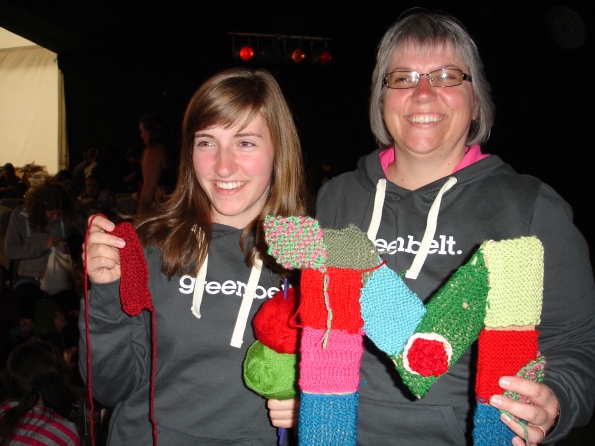
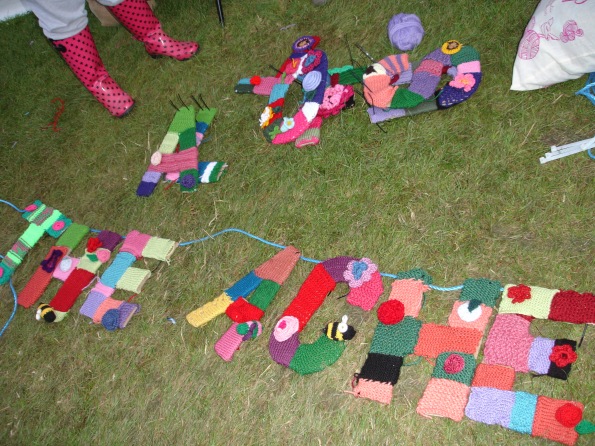
The finished piece was a quote by Maya Angelou, which read ” The ache
for home lives in all of us”
First published in Reform Magazine, May 2013.
My infant teacher Mrs Thompson banned the use of the word nice in her classroom. By forbidding one of the only positive adjectives her class of six year olds knew, we were forced to expand our vocabularies. From that point on kittens were “adorable”, cake was “delectable”, and dinner ladies were treated to some pretty Jane Austen sounding exchanges between under eights in the playground – ‘Why are you crying?’ ‘Because Kelly-Ann wasn’t being very genial to me.’
Thirty years later the legacy of Mrs Thompson’s prohibition of this over-used four letter word is that I still regard using nice as lazy. There are plenty of other more specific adjectives you can use before having to resort to the positive but ultimately unrevealing descriptor of ‘nice’.
I would go as far as to say that the only times it is really appropriate to use nice on it’s own would be when offering someone “a nice cup of tea” or complimenting their body odour – “you smell nice,” And at a push any combination of the two – e.g. “This cup of tea smells nice” Or “Your body odour smells of Earl Grey. Nice!”
Given my 30 year prejudice against the blandest word in the English language, can you guess what my answer is to the question is God nice? My answer is NO! GOD ISNT NICE! Try a bit harder! This is God we’re talking about, the creator of heaven and earth. He sent his son..to die….for us. Nice doesn’t even cut it! And put Roget’s Thesaurus down, because God isn’t genial, or amiable or pleasant or peachy even.
Trying to answer the question, Is God nice highlights the key problem theologians and preachers have struggled with for years – applying a human character trait to God is both inadequate and pointless. It tells us in the Bible that the mind of God is unknowable and as the writer Revd David Bryant points out we are on dangerous ground if we try to apply character traits and personality onto God – “Faith is not the progressive unearthing of God’s nature but a recognition that he/she is fundamentally unknowable.”*
Whilst we can’t and shouldn’t try to know the mind of God, we do know about God’s deeds, and these are the evidence for the answer to the question ‘Is God nice?’ Yes God is nice, because God’s deeds in the lives of others, in our own lives and recorded in the Bible demonstrate time and again God being nice to disobedient humans. Or as Mrs Thompson would prefer me to phrase it – demonstrate time and again God being benevolent, considerate and generous to disobedient humans.
* ”God is unknowable – so stop looking for him – and you will find faith” – David Bryant, Comment is Free, The Guardian, 8 Jan 2013
First published in Third Way magazine, October 2012. Guest article covering for regular columnist
In the supermarket yesterday morning the cheerful chap behind the till handed me my change, wished me a good day and added, “It’s nearly the weekend!” I nodded politely and smiled, then walked away thinking “Since when did Wednesday at 10am become ‘nearly the weekend’”?
Don’t get me wrong everyone looks forward to time off work and this was clearly a conversational set piece, a silence filler in a dull retail job but this exchange reminded me that after a summer of Jubilee, Olympics, Paralympics and scandals about nudey princes in Vegas, we are now staring down the barrel of normal life. At this time of year as things get darker, colder and damper many of us, myself included, get a bit fed up, and this year after all the excitement of summer 2012 that feeling could well be worse than ever, what then have we got to look forward to?
Firstly anyone who answers that question with Christmas deserves a dead arm, because it’s way too early for that, and anyone who says Halloween is clearly younger than me and doesn’t realise trick or treating is not a British thing, we just copied that from the film E.T. The correct answer is there is nothing to look forward to, for a while at least, because we are now in “Ordinary Time.” And to this I say Hooray!
I grew up a Methodist, so I was too busy drinking sacramental Ribena and debating whether tombolas were evil to fully engage with the liturgical calendar. (Some searing denominational satire there for you schism fans!) It is only in the past few years that I have learnt about and appreciated the rhythms and seasons of the liturgical year, something I have picked up from listening to Franciscan podcasts. (Can I just say I love the fact that monks are always on the cutting edge of technology – podcasts, the blast furnace, beer with fruit in it! Nice work lads.)
There are thirty-three weeks of Ordinary Time in the average liturgical year (thirty-four weeks some years for a reason I don’t really understand, but the podcasting monks have probably developed an app or a IMAX presentation to explain why). I like the fact that in calling it Ordinary Time, it is as if the church is saying ‘It’s official everyone, go about your daily lives please, nothing special needs to happen. It doesn’t matter what Clinton Cards say we are not, repeat we are not, in the official run up to anything. Do everyday stuff. Do the laundry, read the Bible, pay the gas bill, worship God, eat beans on toast, eat the beans cold out the tin with a fork if you like, it’s fine, it’s ordinary!’
All of October and the bulk of November is ordinary time. So after our 2012 summer of wonder and before Advent creeps up on us all, normal service is resumed, and we have permission to just be.
Like most people I am not a natural at ‘just being’, and it is definitely easier to praise God and appreciate the simple things during a time of plenty. However I am determined this autumn not to see Ordinary Time as a low point in the year, a long dark, cold trudge to the next time of wonder. Instead I am going to revel in the every day, enjoy the fact that the pressure is off, that we can restock the cupboards, wash the muddy festival clothes and get back to normal.
Number 1 in an occasional series: No-one is allowed to talk during Doctor Who.
Something I didn’t know until I met my husband is that the correct way to watch Doctor Who is in complete silence. It’s not just talking that is banned, gasping, squealing and exclamations of fear are also frowned upon. Even if the episode is way scary, like the one with those blinky angels or that spooky little kid with a gas mask wandering around saying “Are you my Mummy?”, you must to stifle your eeks, oh nos, and blimeys in case you talk over an important plot point.(I’ll be honest I don’t know who turned out to be that kid’s Mummy, so perhaps DW silent viewers have a point.) You must also muffle any coughing or sneezing, and where possible cut out any unnecessarily noisy respiration. “You’re doing the breathing again” is a real quote from our marriage that I am thinking of making into a sampler for our living room wall. (For the record I had a cold and it was that or die due to lack of oxygen.) Doctor Who must be enjoyed in a room so quiet you could hear a pin drop, although obviously noisy crafts like embroidery and knitting are not permitted during DW, so that sampler will have to wait.
On the flipside, in order to view the Great British Bake Off properly you are invited to gasp, smack your lips, shout ‘yum!’ and give short whistles of admiration throughout the duration of the programme. The other viewer can either join in with this noisy appreciation or agree to must make no comment at the cacophony of the other. The same rule applies to One Born Every Minute. Gasping, wincing and audible sobbing are an entirely appropriate response from the viewer, although shouting ‘yum!’ whilst a pregnant woman squeezes another person out of her foof is really inappropriate in most cultures including our own.
And finally if upon returning home from work you find your loved one watching the Hairy Bikers, which they then hastily turn off and look a bit guilty. This will be because they are ashamed to admit that they have been voluntarily watching some of the most fake bonhomie ever caught on camera and not because they fancy old fat blokes from the north-east. And no amount of shouting “Why-eye! Stroke my lovely beard!” will get them to say otherwise.
I love a good choir. I love communal singing. Both doing it and watching it. In fact what I really love is not a good choir, but an AVERAGE choir. The more community orientated, slightly shonky and off-key-but-giving-their-all the better. The very act of making a joyful noise, working together always moves me and I end up with “something in my eye.”
Turns out I am not alone, so I created a one-stop shop of clips of choirs giving it their all.
So fancy a cry? Here’s the dead cert way to get  those ducts leaking. Hankerchiefs at the ready folks, as I present:
those ducts leaking. Hankerchiefs at the ready folks, as I present:
A snifftastic collection of cover versions by choirs, all in one handy Tumblr, so you can have a listen and sob in just one click. Choral Catharsis!
Submit to the loveliness!



